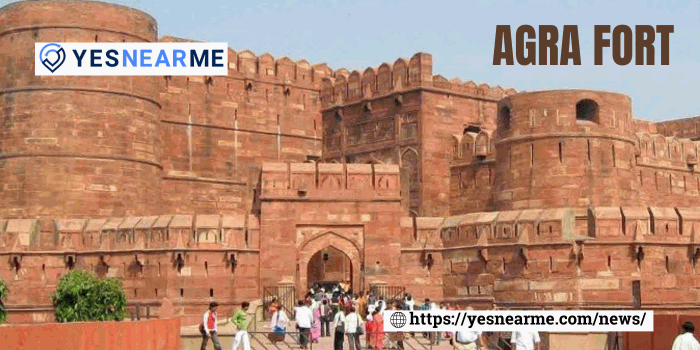
Table of Contents
Kalyangad Fort
Kalyangad Fort, also known as Nandgiri Fort, is a historic hill fort located in the Satara district of Maharashtra. Perched at an altitude of approximately 3,537 feet, it was built during the Shilahara dynasty and later captured by Chhatrapati Shivaji Maharaj in the 17th century. The fort played a strategic role in Maratha history and was later used by the British.
The trek to Kalyangad is moderately challenging, offering breathtaking views of the surrounding Sahyadri hills. Notable attractions include the ancient caves, water cisterns, and a temple dedicated to Lord Mahadev. The fort’s structure, though in ruins, still reflects its historical significance.
Monsoon is the best time to visit, as the lush greenery enhances its beauty. It is an ideal destination for history enthusiasts and trekkers looking for an offbeat adventure. The fort’s rich past and scenic landscapes make it a must-visit in Maharashtra.
Historical Significance
The fort dates back to the Shilahara dynasty and was later an important stronghold during the rule of Chhatrapati Shivaji Maharaj. It played a crucial role in the Maratha Empire’s defense system, controlling trade routes and safeguarding the region. Post-Shivaji’s era, it fell into the hands of the British, who used it for their administrative purposes.
Trekking to Kalyangad Fort
The trek to Kalyangad is moderately challenging and takes approximately 1.5 to 2 hours from the base village Nandgiri. The trail is well-marked but involves steep ascents and rocky terrain, making it an exciting adventure for trekking enthusiasts.
Nestled amidst the rugged hills of Satara district in Maharashtra, Kalyangad Fort stands as a silent witness to centuries of history. Also known as Nandgiri, this majestic structure is more than just a hill fort; it is a living testament to the strategic brilliance and martial spirit of the Marathas. Its enduring walls and commanding presence echo the timeless story of courage, resilience, and valor.
One of the most fascinating aspects of Kalyangad is its secret underground passage and caves, believed to have been used for storage and safe movement during attacks. These tunnels highlight the foresight of the Marathas, who were always prepared for siege warfare. The fort also housed granaries, water tanks, and temples, making it self-sufficient in times of conflict.
Beyond its military history, the fort also carries spiritual significance. The caves within Kalyangad are associated with Jain monks who once meditated there. Even today, pilgrims visit these sacred sites, blending history with faith.
Today, though partially in ruins, Kalyangad Fort continues to attract trekkers, history enthusiasts, and devotees alike. Every stone of the fort whispers stories of battles fought and victories achieved. It is a place where history meets adventure, and where the legacy of the Marathas still breathes in the mountain air.
Kalyangad Fort truly embodies the echoes of Maratha valor and glory—a timeless reminder of Maharashtra’s proud heritage.
Trek Route & Difficulty Level
- The trek starts from Nandgiri village, located about 22 km from Satara.
- The initial climb consists of stone steps leading up the hill.
- Midway, the path becomes steeper, requiring careful navigation.
- As you ascend, you’ll encounter water cisterns, caves, and bastions offering panoramic views of the Sahyadri ranges.
- The difficulty level is moderate, making it suitable for both beginners and experienced trekkers.
Attractions at Kalyangad Fort
1. Ancient Caves and Water Cisterns
One of the main attractions of the fort is the series of underground caves carved into the rock. These caves, believed to be used by ascetics and warriors, contain freshwater cisterns that still hold potable water.
2. Mahadev Temple
The fort houses a small temple dedicated to Lord Mahadev, a site of religious significance for locals and trekkers alike. The temple’s serene atmosphere makes it an ideal spot to rest and rejuvenate during the trek.
3. Bastions and Fortification Remains
Though in ruins, the fort’s bastions and walls still stand strong, showcasing its architectural strength. The strategic positioning of the bastions offers stunning 360-degree views of the surrounding landscapes.
4. Mesmerizing Views
From the top of Kalyangad, visitors can witness breathtaking views of Dhom Dam, Krishna River, and the lush green valleys of the Western Ghats. The monsoon season adds to the beauty, with mist-covered hills and flowing streams making the trek even more picturesque.
Best Time to Visit
- Monsoon (June to September) – The fort is covered in lush greenery, waterfalls, and mist, creating a magical ambiance.
- Winter (October to February) – Cool weather and clear skies make trekking comfortable and enjoyable.
- Summer (March to May) – Can be hot, but early morning or evening treks can still be pleasant.
How to Reach Kalyangad Fort
- By Road: The fort is around 22 km from Satara and can be reached by private vehicles or local transport.
- By Train: The nearest railway station is Satara Railway Station, from where local transport options are available.
- By Air: The closest airport is Pune Airport (120 km away), followed by a road journey to Satara.
Essential Tips for Trekking
Wear sturdy trekking shoes for better grip on rocky surfaces.
Carry enough water and snacks, as there are limited food stalls en route.
Start early in the morning to avoid trekking in the afternoon heat.
Carry a raincoat if visiting during monsoon, as rains are unpredictable.
Respect the heritage site by avoiding littering and vandalism.
Kalyangad Fort Map
Follow More Article
